Ashland Company Opens New Possibilities for Solar Energy
Strackers Provide Maximum Solar Energy with the Smallest Footprint
By Chris Cook, Capiche, capiche.us
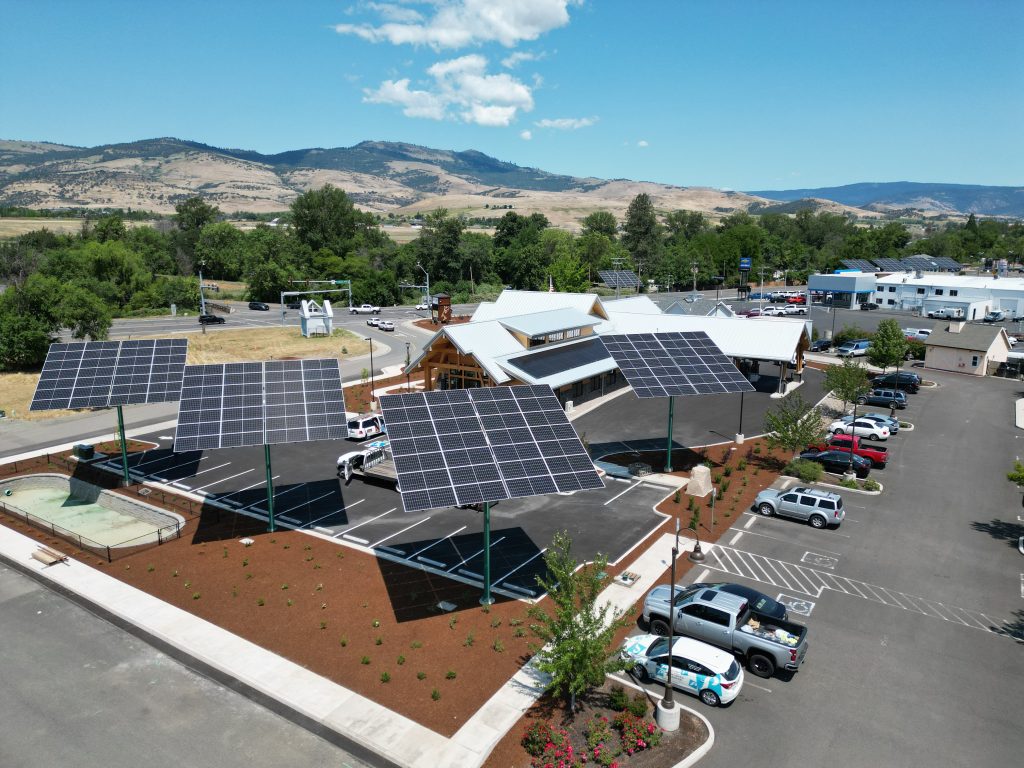
Southern Oregon has vast solar energy potential, and an Ashland-based company is leading the way with an innovative high-tech solution. With an average of nearly 200 days of annual sunshine and high irradiation levels, the climate is right for solar. The political climate is also as right as ever, with federal tax credits, state rebates and grants reducing system costs by 70% (examples include the US Department of Energy, Energy Trust of Oregon and the Oregon’ Dept of Energy including its recent Climate Resilience Package).
At the local level, cities and local utilities are offering a variety of solar and energy-saving incentives. Programs are available to assist every type of customer who wants to incorporate solar into their energy options— residential, institutional, commercial, industrial and municipal.
Gov. Tina Kotek has set a goal to achieve 100% clean electricity by 2040, and the funding sources available today are making renewable energy and clean transportation options available and affordable for all Oregonians.
Solar photovoltaic (PV) energy production is not a new technology, but it continues to improve in capacity, availability, and affordability. Most of us are quite familiar with rooftop solar installations at homes and businesses, as well as the fields of ground-mounted solar arrays, which are all actively producing renewable energy.
Stracker Solar, an Ashland-based company, has developed an alternative mounting system for solar that opens up spaces where traditional solar hasn’t fit while providing the most efficient PV production available. With its single pole mount, Stracker systems can be installed in various terrains and orientations — from pathways to slopes. Its design allows for solar projects that would otherwise be infeasible due to space constraints or inadequate rooftop size, orientation or load-bearing capacity. Stracker’s flexibility to install on marginal land allows scalability of a new market.
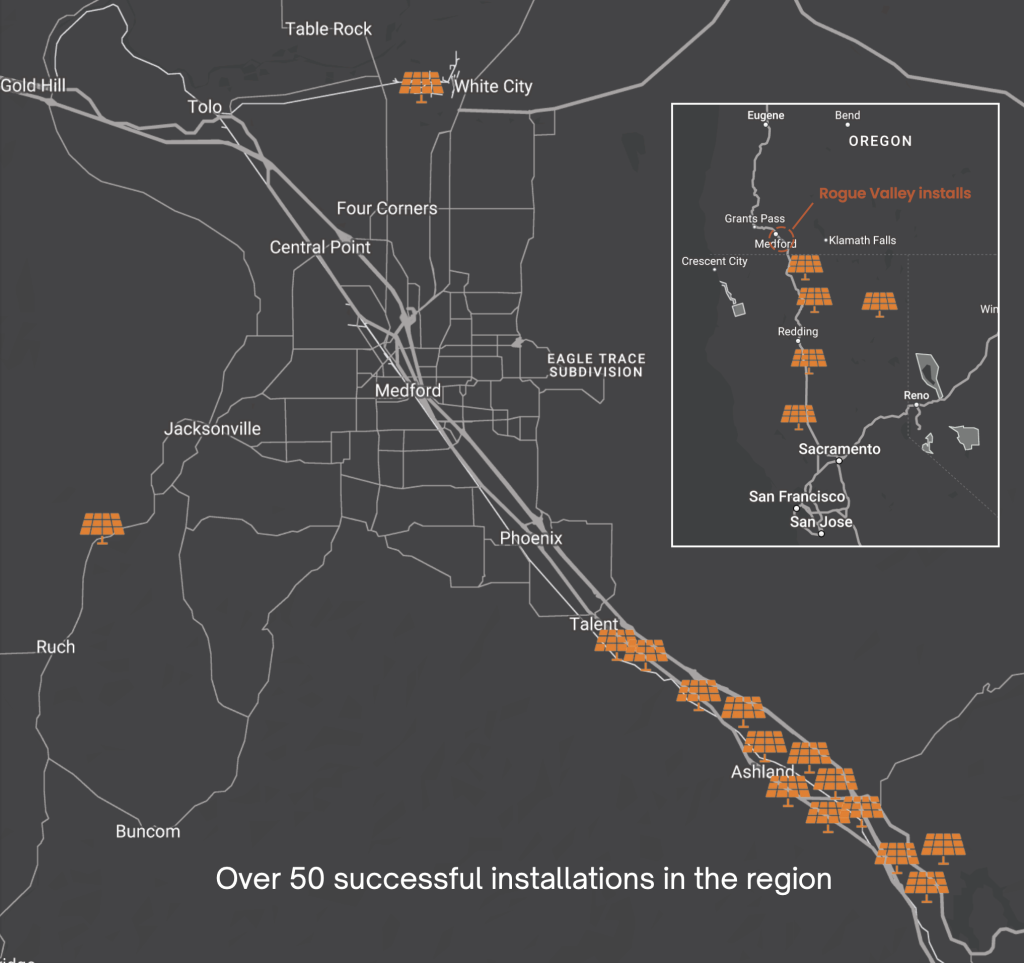
Solar Solutions are Visible Commitments to Clean Energy
All you need to do is exit I-5 at South Valley View Road and hit Rte. 99 before you see evidence—the four Stracker Solar panels at Evergreen Federal Bank and its next-door neighbor, TC Chevy, with five Stracker panels of its own.
The new Evergreen Federal Bank branch uses a combination of parking-lot Stracker Solar panels and a rooftop PV system.
“For some time, we’ve been interested in having solar panels on our branches. As we talked with our community to find out what was important to them, solar was the first thing we heard and kept hearing,” Melissa Vierra, Evergreen Federal Bank’s Marketing Director, said. “When we had the opportunity to build from the ground up, the rooftop panels became an option.”
“We also talked with Stracker Solar, having seen what TC Chevy next door had installed, and we added four Stracker Solar panels. We thought, wouldn’t it make a statement that when you come off the Interstate, you see a beautiful building with solar? They are a visible sign of our commitment to solar energy,” Vierra continued.
“They’re absorbing a lot of energy because they’re moving, getting the most out of the sun throughout the day. Walking in the door, you can see how much energy is being sourced. We saw that take off, and this is really working. We were so pleased to see that it was sourcing way. We wouldn’t be able to get to net zero if we didn’t combine the rooftop and Stracker solution.”
Evergreen is so committed to solar energy, the bank developed a program that offers solar financing options and solar tours to help the community learn about net zero energy and available solutions for solar power generation.
“We are honored to be part of this exciting step for Evergreen Federal,” says Jeff Sharpe, Founder and COO of Stracker Solar. “Implementing the most sustainable net-zero energy path for their own business while offering solar financing to their customers is a great step forward in promoting and facilitating the clean energy transition for our community.”
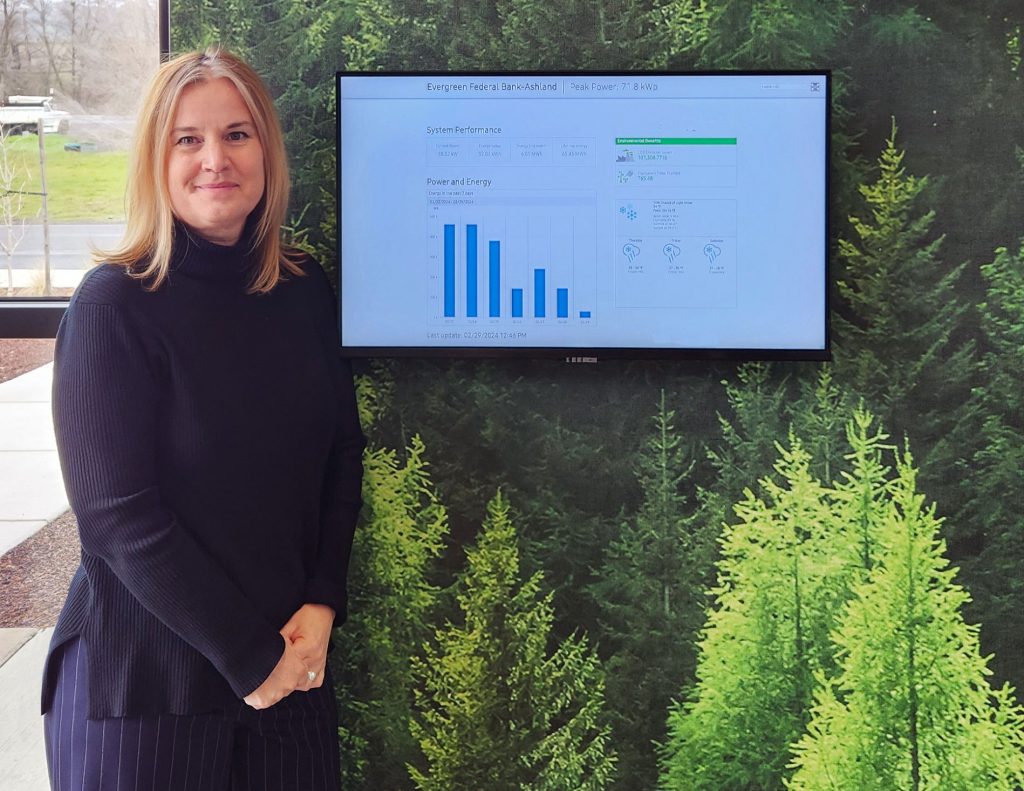
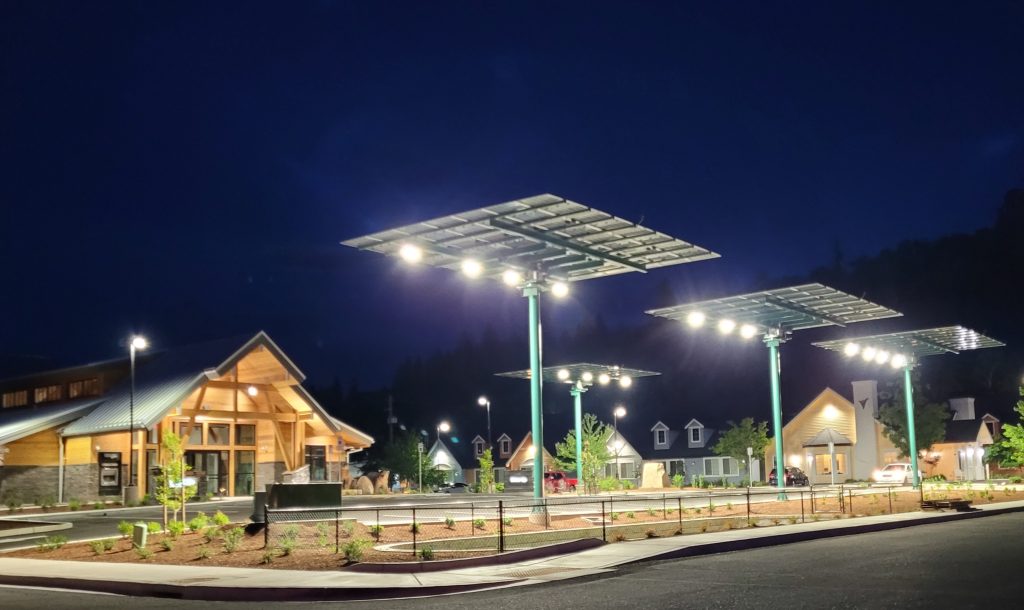
TC Chevy founder, Alan DeBoer, can boast that this solar solution is making the dealership one of the cleanest car dealerships in the country. It’s 100% on-brand in that TC sells more electric vehicles than any other dealership in Southern Oregon. We are proud to be decreasing our impact on the environment while helping our customers do the same.
“It’s amazing, really,” DeBoer said. “The Stracker units are a perfect fit for our car lot, with negligible impact to the size of the lot, while providing power and lot lighting with bright, energy-efficient LED lighting. We’ve cut our electric bill by 20% and realized another benefit to the dealership—shaded parking!”
“We believe in cutting-edge technology,” said Derek DeBoer, 3rd generation owner/operator of TC Chevy. “Our cars and trucks feature the latest designs and manufacturing practices, and we wanted a solar power system that does the same. The fact that the Strackers are the most efficient and impressive solar solution available sealed the deal.”
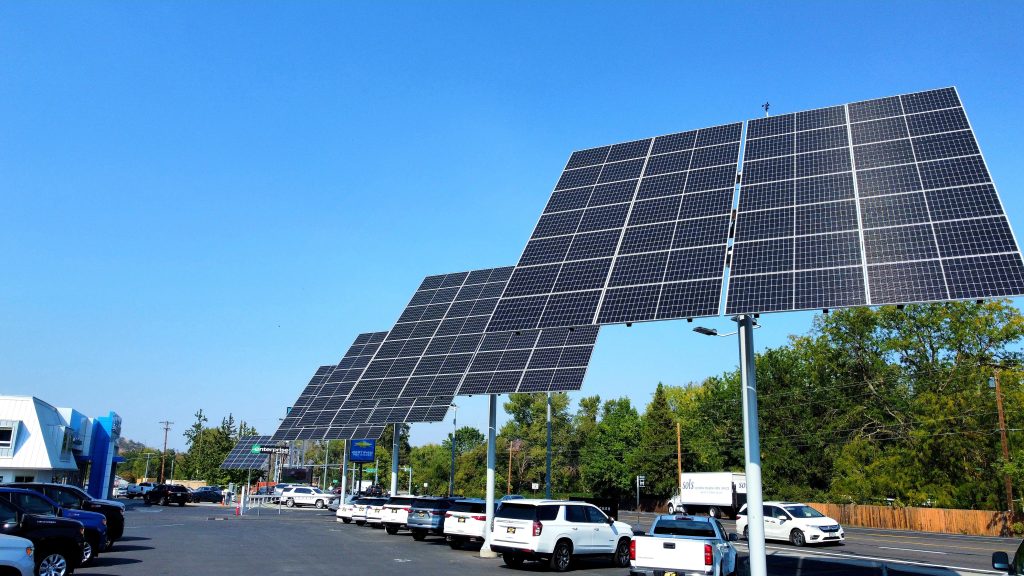
City of Ashland Catches the Vision
While the sun-chasing pole-mounted Strackers at Evergreen Federal Bank and TC Chevy may be the most visible new solar projects, the City of Ashland Service Center project truly benefits City Electric consumers and residents. The project is garnering national attention, helping establish Ashland as a leader in emerging solar plus storage technologies, and providing a measure of healthy community development and economic stimulus as we continue the vital transition from fossil fuel to resilient wind and solar power.
Stracker Solar developed this project, which garnered a 100% Oregon Department of Energy Community Renewable Energy Program grant of $940,000. The project includes six 75kW Stracker units, four 480V Level-3 Electric Vehicle Charging Stations hookups, and a battery backup system. The system includes the infrastructure to facilitate two-way EVCS units in the future to use connected EV batteries as additional backup. The project will help maintain emergency services for the Electric Department and City vehicle fuel pump operations (for ambulance and fire truck service) when the electric grid is down.
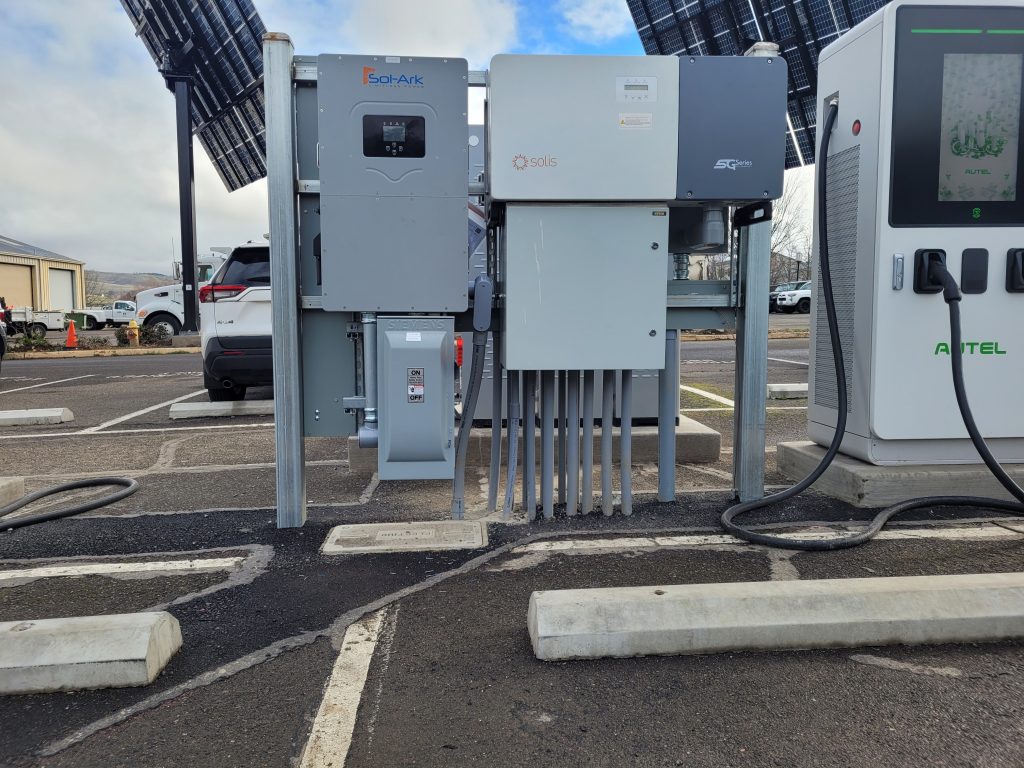
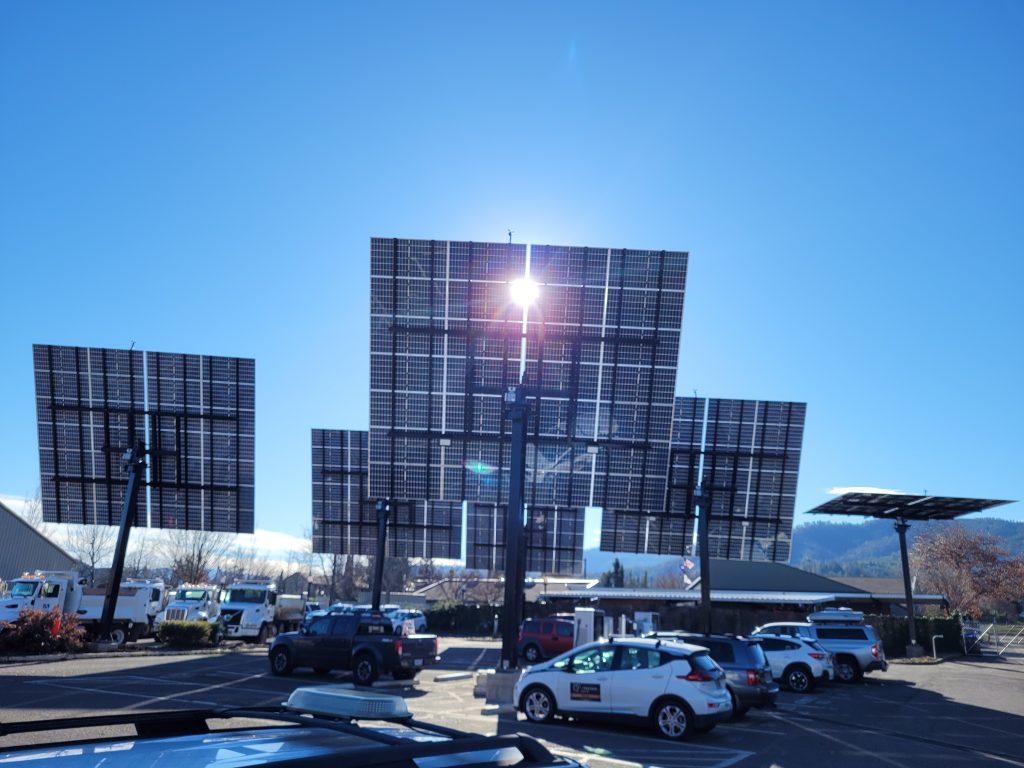
Community Solar Starts at ScienceWorks with a Collaboration Including SOU and Abbott’s Cottages
In 2019, Stracker designed and built Ashland’s first community solar project at the ScienceWorks Museum in collaboration with ScienceWorks, Southern Oregon University and local business owner Brad Roupp of Abbott’s Cottages. Three more Strackers were added in 2021 and the power produced is now being allocated to ScienceWorks, seven vacation rental cottages, a home and an office. That project has made Abbott’s Cottages a net zero business in Ashland.
Roupp said, “We were looking to protect ourselves from rising energy costs and to offset our carbon footprint. When we looked into Stracker we immediately realized that there is a win/win option produced right here in the Rogue Valley. Far better than purchasing offsets for our carbon footprint, we now produce all of the electricity for our business and personal use, and we can provide solar electrical credits to the electric meters of several of our friends. Purchasing Strackers is the best investment we have made, for our business and the environment.”
In locations like Ashland, where community solar programs are in place, companies with extra land or large parking areas can lease their sites for community solar projects. Information about these programs is available on the Ashland Solar Co-op and the Oregon Community Solar program websites.
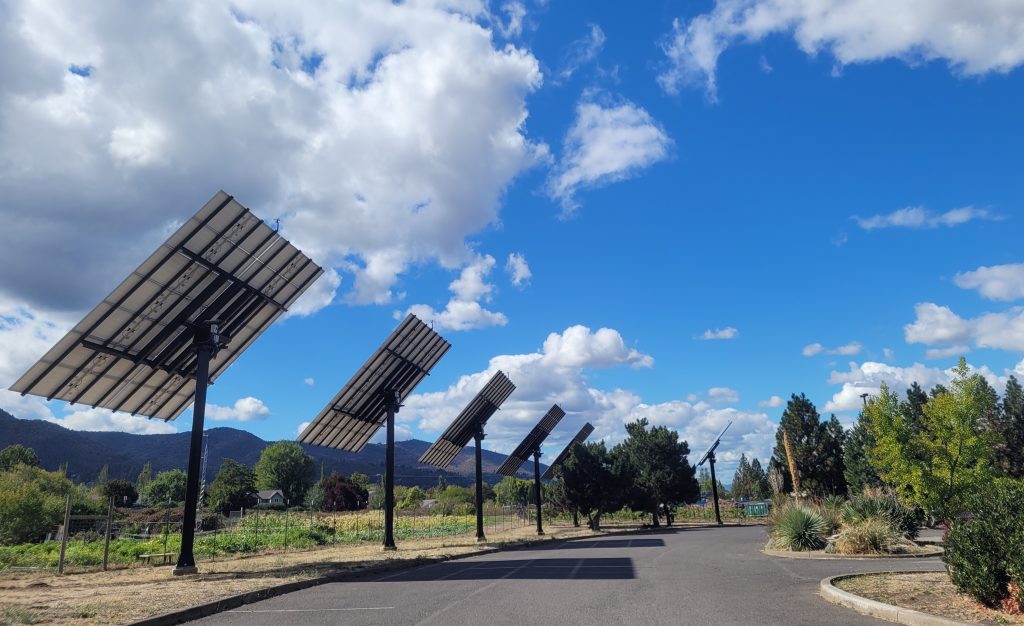
SOU on Track to Meet Ambitious Solar Energy Goals
SOU is on track to meet its ambitious goal of transforming its campus by harnessing solar energy to fulfill 100% of its daytime electricity requirements. Becs Walker, SOU’s Director of Sustainability, notes, “In achieving this goal, SOU will be the first public university in the U.S. to do this. This initiative aligns with the university’s commitment to reducing greenhouse gas emissions, revenue diversification. It opens avenues for academic integration, offering students valuable hands-on experience in the renewable energy sector.”
To date, SOU’s rooftop solar panels have generated approximately 3,425,075 kWh, equivalent to a monetary saving of about $205,505. This remarkable feat highlights SOU’s proactive approach to renewable energy and echos its commitment to sustainability.
Further projects are being planned to continue to progress towards SOU’s goal of 100% daytime electricity use generated on campus from solar.
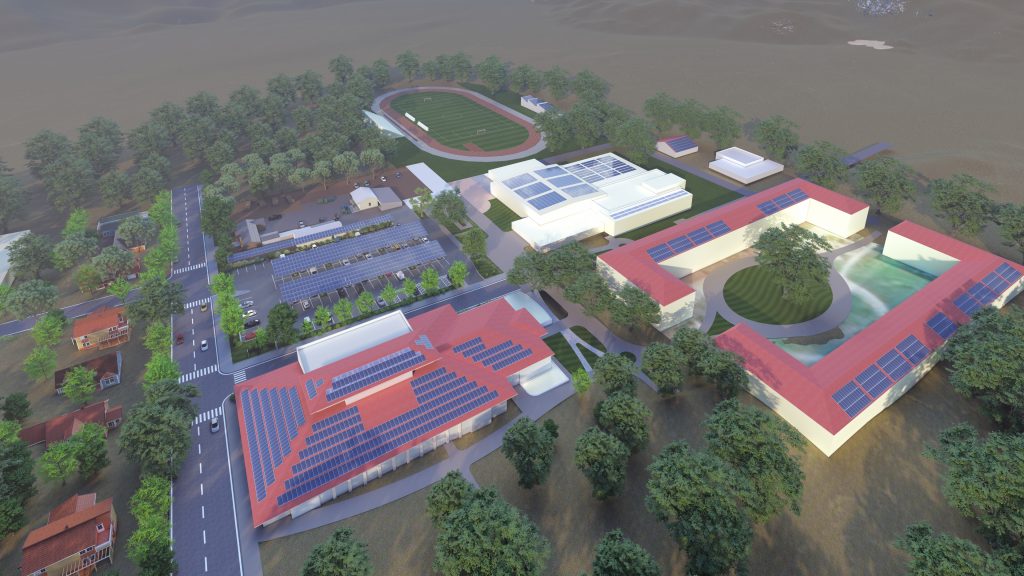
Solar’s Popularity for Commercial Facilities Grows Locally
Ashland’s Work Sharp manufacturing company made headlines this January when its six-Stracker PV system came online. Having a rooftop installation from about 15 years ago, they had a positive track record with solar energy.
“The roof-mounted solar project was a positive foray into solar energy. For this new phase, we went with Stracker Solar because the Strackers are a little easier to maintain, and they’re more efficient because they’re directional,” COO Grant Loberg explained. “Also, having that bi-directional tracking is really cool. At first, it was somewhat of a drawback for me, I thought, ‘Am I really going to like these things out in the parking lot? Are people going to look at them and have some negative or political reaction?’ But quite contrary to my fear, our employees are proud and tell their friends and family. And the Strackers – on 20-foot poles in the parking lot – are visible, making our commitment to the environment a talking point.”
“Most people are familiar with static, roof-top solar systems, but few people know about Stracker’s bi-directional systems. Due to the ability of Stracker to track with the movement of the sun, they operate at a much more efficient level, which increases the return on capital, while reducing costs for cleaning and servicing.”
“Not many people know about Stracker like they know about roof-mounted solar panels.” Loberg continued. “ Strackers were a better bang for our buck. They’ve helped Work Sharp reduce the amount of energy we have to purchase, and there’ll be months where we’re generating more than we’re using, depending on the situation. There’ll be times when we’re actually selling power back, which is great!”
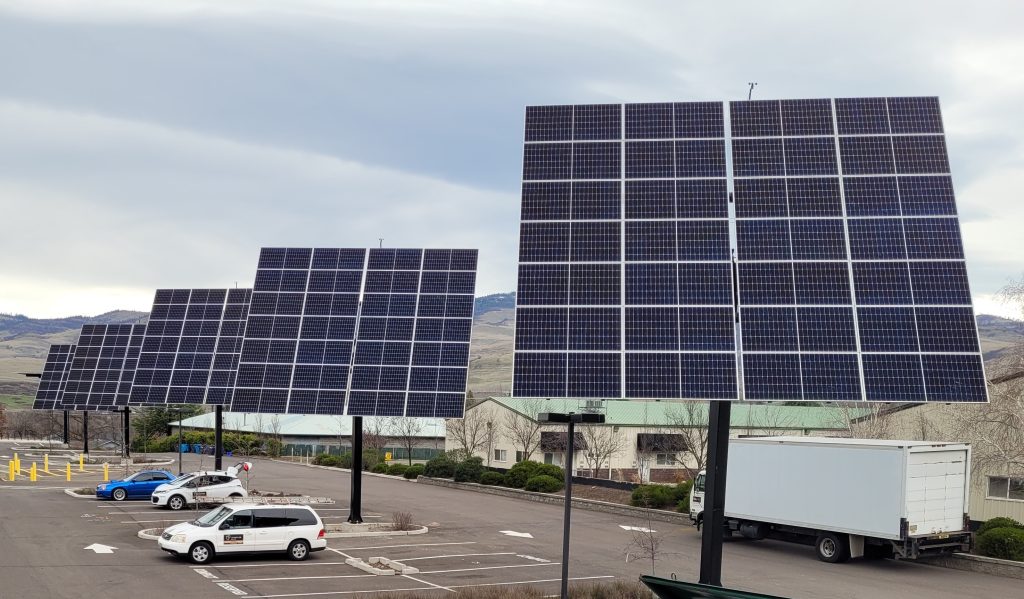
Ashland is not the only Southern Oregon city to embrace solar energy projects. In 2022, Franz Bakery chose a state-of-the-art 75.6 kW solar installation to produce clean energy for its new Outlet Store and Depot in White City. The six elevated dual-axis solar trackers move gracefully with the sun all through the day in the parking lot of the newly built facility.
The six-Stracker installation was designed to achieve net-zero electric status for the new location while accommodating possible future electric vehicle charging stations and other operations-related energy demand increases.
“Bringing our clients best-in-class solutions is an essential part of how we do business, and solar is no exception. We chose to partner with Stracker Solar because of their unique product, which is not only perfectly compatible with parking lots but also the most efficient PV system available,” said Alex Batzer, project contractor from JB Steel.
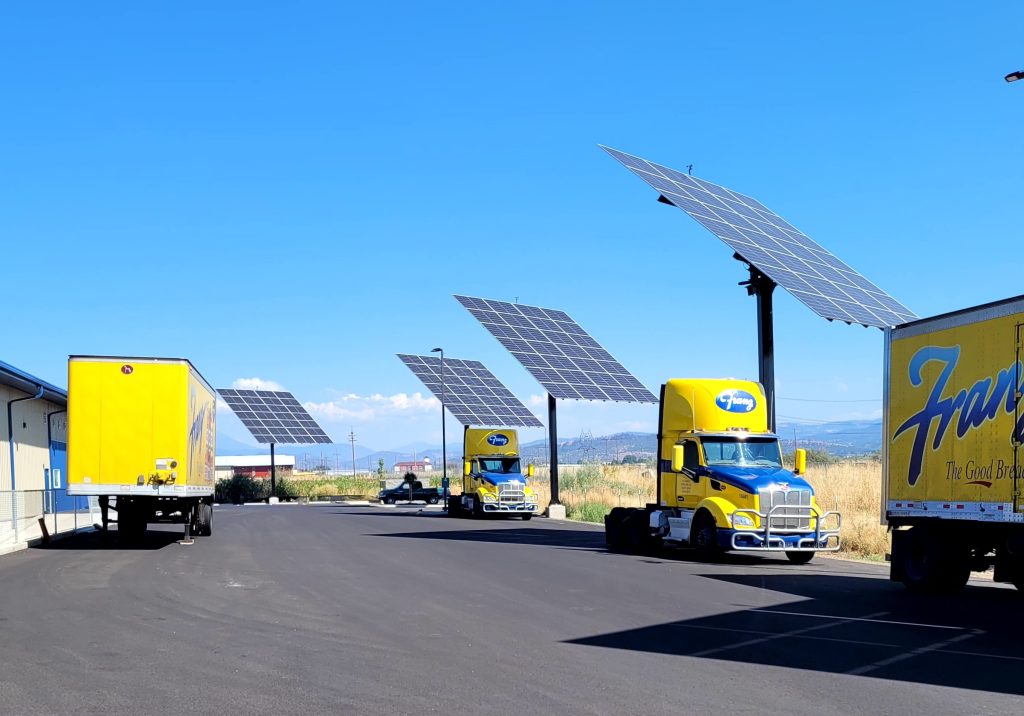
“Stracker Solar is honored to help accelerate the clean energy transition with our robust and reliable elevated dual-axis trackers. We deeply appreciate our investors, partner fabrication shops and tradespeople helping drive us into the clean energy spotlight as we prepare for our national and global expansions,” Sharpe said. “We are truly excited for the vast potential of sites – previously unsuitable for solar – that Strackers unlock for distributed renewable energy.”
About Stracker Solar:
- Stracker specializes in the production of pole-mounted solar tracking systems. Crafted and manufactured in Ashland, Stracker projects qualify for an additional 10% tax credit for domestic content, enhancing the economic attractiveness of solar projects.
- Stracker is revolutionizing solar energy utilization, enabling access to sunlight in previously untapped locations with flexible and efficient solutions. Strackers stand out as the most durable and efficient solar power systems on the market, boasting up to 70% more annual solar energy generation compared to fixed rooftop, carport or ground-mount systems of similar size. This remarkable efficiency also produces a 55-65% lower carbon footprint.
- With a 20-foot pole mounting design, Stracker systems allow for the continued use of ground space beneath, making them ideal for various applications such as parking lots, agricultural operations, school yards and community solar projects. Beyond their functional benefits, Strackers also make a powerful visual statement, showcasing proactive climate action in action.
- Strackers carry the trusted UL 3703 solar system certification and qualify for Energy Trust of Oregon incentives.
By Chris Cook, Capiche, capiche.us President and CEO of Capiche, Chris Cook is a marketing strategist and leadership coach focused on performance, culture, and living your brand. She brings decades of experience in marketing and a love of entrepreneurship.
Listen to the podcast about Stracker on JPR’s The Jefferson Exchange at https://www.ijpr.org/show/the-jefferson-exchange/2022-06-17/mon-8-30-following-the-sun-with-solar-in-the-ground-floor


Advertisement